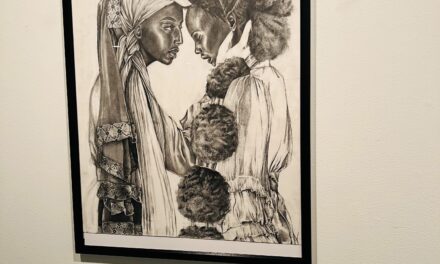Question of the year: How did Miley Cyrus make twerking more openly acceptable in America?
Though for years written off and shunned by mainstream society, it seems the former Disney star has come riding in on her white horse and saved the day for twerkers across America.
To “twerk” is a verb meaning to dance moving one’s upper and lower hips in an aggressive bouncing motion. Twerking is most closely associated with the Black community, as Black women (and sometimes men) are the ones commonly seen performing the dance. Twerking has had its share of criticism from those both inside and outside of black culture, possibly because it isn’t comparable to ballroom dancing or salsa.
Ties to this type of dance involving booty shaking have been made to African tribal dances, as well as Arabian ceremonial and ritualistic dance. Today, twerking can be seen in a large percentage of rap music videos, where video vixens attempt to seem seductive and desirable to men by performing the incendiary dance.
Young women of our generation have taken this dance and used it with the same intentions, (almost) transforming it into an art of club dancing. Dancers like Lady Lucious and Twerk Sum, the duo who make up the infamous Twerk Team, travel the country providing their twerking services to paying club promoters and owners. The two have even turned the dance into a career. Throughout this time, mainstream society has dismissed twerking as unacceptable in its usual diatribe against aspects of black culture. However, it seems that after the video of Cyrus twerking in an adult-sized unicorn onesie, the concept has become cute and tolerable.
When social networkers caught wind of Cyrus’ video, she became an instant topic of conversation. Her video caused such uproar that even news broadcasting stations such as CNN felt it important enough to discuss, analogous to The Harlem Shake craze of the spring.
Why does it take the crossing of racial thresholds to cause the majority to approve of certain trends rather than the minority? Not to mention, Jay- Z’s shout-out to Miley twerking on his new album Magna Carta Holy Grail was seemingly another seal of aproval. Mr. Carter referred to Miley as “a God” for breaking color barriers saying, “Black neighbor, and the daughter not seeing color.” Having support from black and white people, Miley has seen fit to twerk at every opportunity she gets, from her videos on Youtube to Juicy J concerts and even at the House of Blues.
 The shift into white America has lightened the feelings towards twerking and who should and should not do it.
The shift into white America has lightened the feelings towards twerking and who should and should not do it.
Before Miley we had many pioneers on the internet who explored new frontiers of twerking. Unlike Miley, they gained the wrong type of attention from men and the admiration of impressionable young girls that caused waves within the community because of damage it was doing to the youth. Though the gap between black, white and twerk relations has been bridged, it still isn’t acceptable just because a Disney child star decided to use it as her big debut. Recently, Miley has made herself a sex symbol and created a provocative image for her career, which at the core should not be upheld or applauded. But, whether we like it or not, somewhere in America Miley Cyrus is still twerking.






